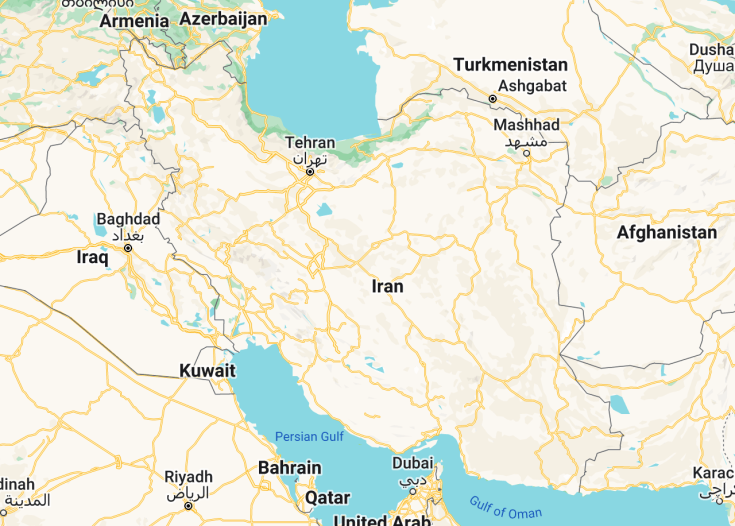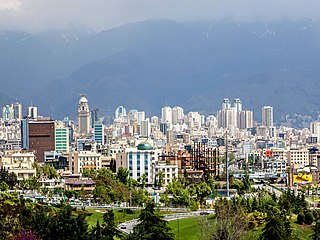Spanning millennia of history, Iran boasts a rich tapestry of Persian culture, breathtaking landscapes, and architectural marvels. From the ancient ruins of Persepolis to the vibrant bazaars of Tehran, Iran offers a blend of the old and the new. The poetic city of Shiraz, the desert citadel of Bam, and the majestic mosques of Isfahan reveal a country steeped in tradition, art, and spirituality. Visitors are often charmed not only by its historical treasures but also by the warmth and hospitality of its people.
Acquaint yourself with local customs and dress codes, showing respect to the nation’s deeply-rooted traditions.
Plan your itinerary around the Nowruz (Persian New Year) celebrations to witness Iran in festive splendor.
Iran: a rich tapestry of history and culture
| Capital | Tehran |
| Time in Iran | GMT +3:30 |
| Language spoken | Persian (Farsi) |
| Population | 83 million (Source: United Nations, 2021) |
| Religion | Islam (99.4%) Shia Islam (90%) Sunni Islam (9%) Other religions (0.6%) |
| Currency | Iranian Rial (﷼, IRR) |
| Airports | Imam Khomeini International Airport Mehrabad International Airport Mashhad International Airport |
Iran, historically referred to as Persia, boasts an illustrious history that spans millennia. This ancient land saw the rise and fall of empires, from the Achaemenids to the Safavids, leaving behind a wealth of architectural and cultural treasures. Nestled between the Caspian Sea and the Persian Gulf, Iran has been a crossroads of civilizations, contributing immensely to the fields of art, science, literature, and philosophy. Today, it stands as a mosaic of ethnicities, languages, and traditions, intricately woven together to define a nation that’s as diverse as it is historic. Its vibrant bazaars, exquisite mosques, and monumental ruins beckon travelers to delve deep into the tapestry of its past and the dynamism of its present.
Where is Iran located?
Iran is situated in Western Asia, bordered by several countries including Turkey, Iraq, Armenia, Azerbaijan, Turkmenistan, Afghanistan, and Pakistan. To its south, it shares a coastline with the Persian Gulf and the Gulf of Oman.
What is Iran famous for?
Iran is renowned for its rich historical heritage, symbolized by sites like Persepolis and the ancient city of Isfahan. Additionally, its contributions to poetry, with luminaries like Rumi and Hafez, and Persian carpets, recognized worldwide for their intricate designs and quality, further accentuate its cultural prominence.
History
Prehistoric Times: The Dawn of Civilization
The history of Iran, known historically as Persia, stretches back to the dawn of human civilization. Archaeological findings indicate that ancient tribes settled in the Iranian plateau around 8000 BCE, laying the foundation for some of the world’s earliest urban centers. Notably, the Elamite kingdoms were among the earliest recorded dynasties in Iran, shaping the cultural and political landscape of the region.
550 BCE – 330 BCE: The Achaemenid Empire
Founded by Cyrus the Great, the Achaemenid Empire became the world’s first superpower, stretching from the Indus Valley to Greece and North Africa. It introduced innovations like the royal road, a postal system, and a single universal currency. The reign of Darius I and Xerxes I saw the expansion of the empire and the construction of the iconic Persepolis.
330 BCE – 226 CE: Seleucids, Parthians, and Sassanids
After the conquest by Alexander the Great, the Seleucid Empire controlled Iran. However, its reign was short-lived, as the Parthians emerged as a significant power. The Parthians were then replaced by the Sassanid Empire, marking a period of cultural renaissance and the propagation of Zoroastrianism, the dominant religion.
651 CE – 1501 CE: Islamic Conquest and Dynastic Changes
The Arab Islamic conquest in the 7th century transformed Iran religiously, linguistically, and culturally. Over the centuries, numerous dynasties, including the Umayyads, Abbasids, Tahirids, and the Seljuks, ruled the region. Despite the political changes, Persian language and culture flourished, especially during the Islamic Golden Age.
1501 – 1736: Safavid Empire
The Safavid Empire, founded by Shah Ismail I, marked the rise of Twelver Shia Islam as the state religion. This period witnessed a cultural renaissance with advancements in art, architecture, and literature. The empire established Iran’s borders roughly equivalent to modern-day boundaries.
19th Century: Qajar Dynasty and European Interference
The Qajar dynasty saw Iran grappling with internal strife and external pressures, especially from Russia and Britain. These powers sought to exploit Iran’s resources, leading to significant socio-political changes, including a constitutional revolution.
20th Century: Pahlavi Dynasty and Modernization
Reza Shah Pahlavi’s reign aimed at modernizing and westernizing Iran, focusing on education, infrastructure, and industry. However, his policies often clashed with religious sentiments. His son, Mohammad Reza Shah, continued modernization efforts but faced opposition. The 1979 Iranian Revolution marked the end of the Pahlavi dynasty and the establishment of the Islamic Republic under Ayatollah Ruhollah Khomeini.
21st Century: The Islamic Republic in the Modern Era
The contemporary era under the Islamic Republic of Iran has witnessed significant domestic and international challenges. Internally, Iran grapples with socio-economic issues, while externally, it navigates its relationship with Western powers, especially concerning its nuclear program. Despite challenges, Iran remains a key regional player, with its rich history deeply influencing its modern identity.
Visit Iran
What to see and do in Iran
When visiting Iran, there are numerous attractions and activities that showcase the country’s rich history and culture. Here are some highlights:
- Explore the ancient ruins of Persepolis, a UNESCO World Heritage site that was once the ceremonial capital of the Achaemenid Empire.
- Visit the stunning mosques of Isfahan, such as the Imam Mosque and Sheikh Lotfollah Mosque, known for their intricate tilework and architectural beauty.
- Discover the vibrant bazaars of Tehran, where you can immerse yourself in the hustle and bustle of daily life and shop for traditional handicrafts.
- Experience the natural beauty of Iran by exploring the deserts, mountains, and forests. From the Dasht-e Kavir desert to the Alborz Mountains, there are countless opportunities for outdoor adventures.
- Learn about Persian literature and poetry by visiting the tombs of famous poets, such as Hafez and Saadi, in the city of Shiraz.
Events in Iran
Iran hosts a range of cultural and religious events throughout the year. Here are some notable events:
– Nowruz: The Persian New Year, celebrated in March, marks the arrival of spring and is one of the most important holidays in Iran.
– Muharram: This month-long mourning period commemorates the martyrdom of Imam Hussein, a key figure in Shia Islam, through processions and rituals.
– Fajr International Film Festival: Held annually in Tehran, this film festival showcases Iranian and international cinema.
– Tehran International Book Fair: Book enthusiasts gather in Tehran to explore a wide range of books and publications.
These events provide unique insights into Iranian culture, traditions, and artistic expressions.
Best time to visit Iran
The best time to visit Iran largely depends on the specific regions you plan to explore and your personal preferences. Generally, spring (March to May) and autumn (September to November) offer pleasant weather and are popular times for tourists. During these seasons, you can enjoy mild temperatures and witness the breathtaking beauty of Iran’s landscapes without extreme heat or cold.
However, it’s important to note that Iran experiences distinct regional variations in climate, so it’s best to research the weather conditions and seasonal attractions based on your specific itinerary.
Is Iran worth visiting?
Iran is undoubtedly worth visiting for those with an interest in history, culture, and stunning landscapes. The country boasts a rich historical and cultural heritage, with ancient ruins, magnificent architecture, and vibrant traditions that continue to thrive. The warmth and hospitality of the Iranian people are also a highlight of any visit.
However, it’s essential to note that Iran is a complex destination with its own unique cultural and political dynamics. Visitors should be mindful of local customs, dress codes, and adhere to the restrictions and regulations in place. It’s always advisable to stay informed about the latest travel advisories and guidance before planning a visit.
With its fascinating history, diverse landscapes, and vibrant cultural scenes, Iran offers a truly unique travel experience that can broaden horizons and create lasting memories.













